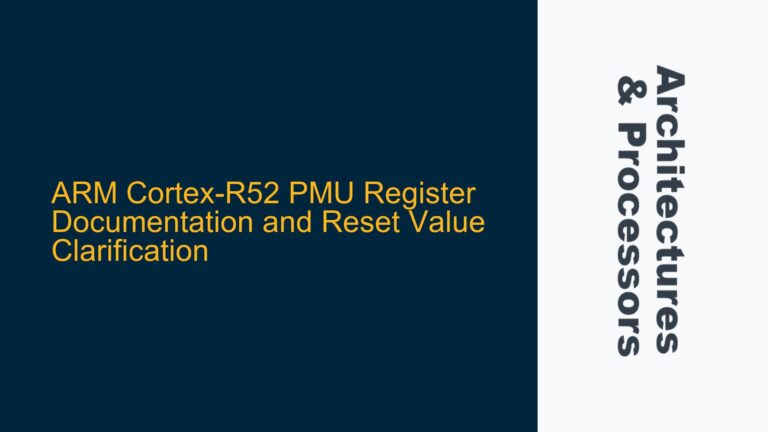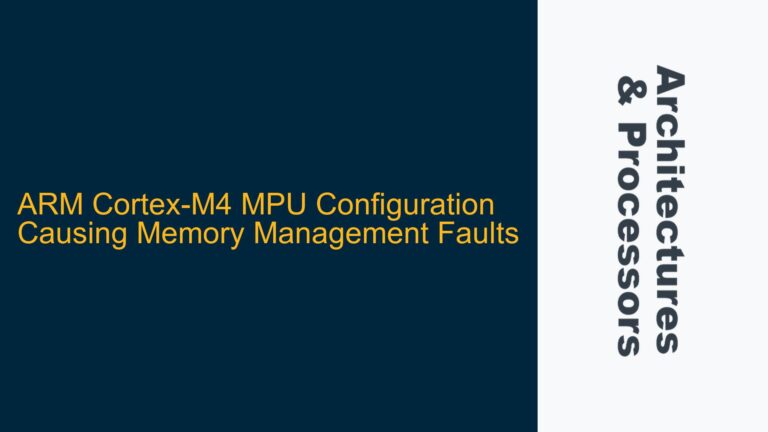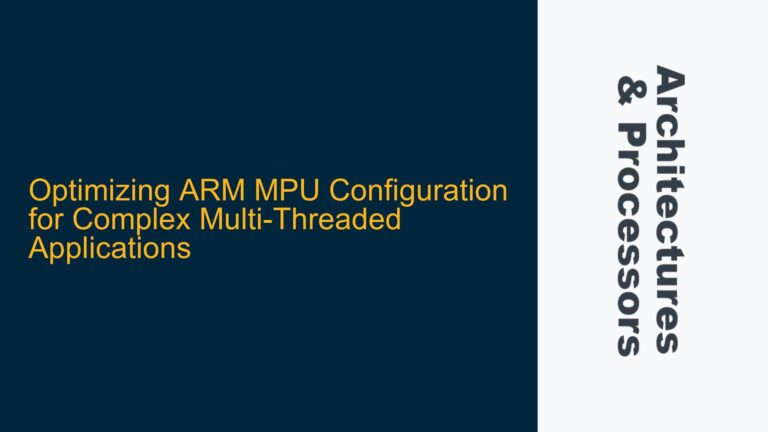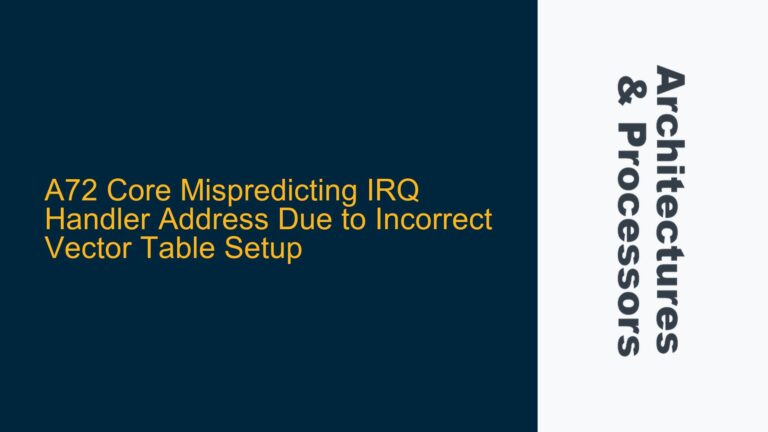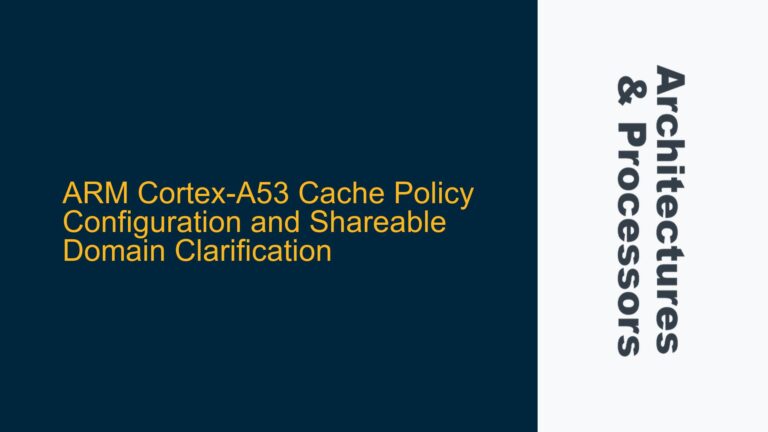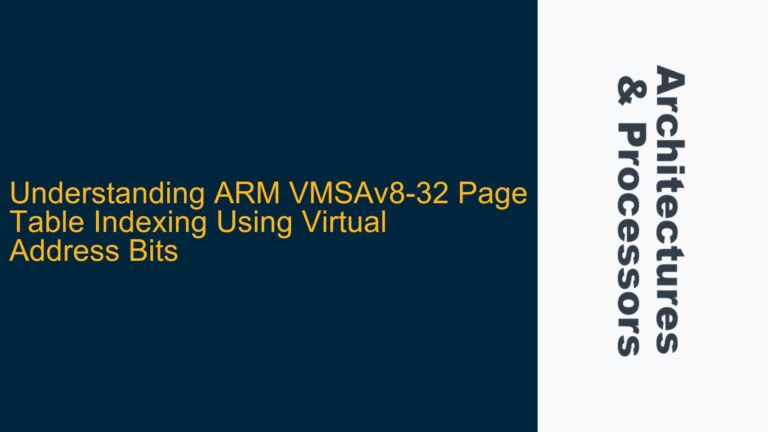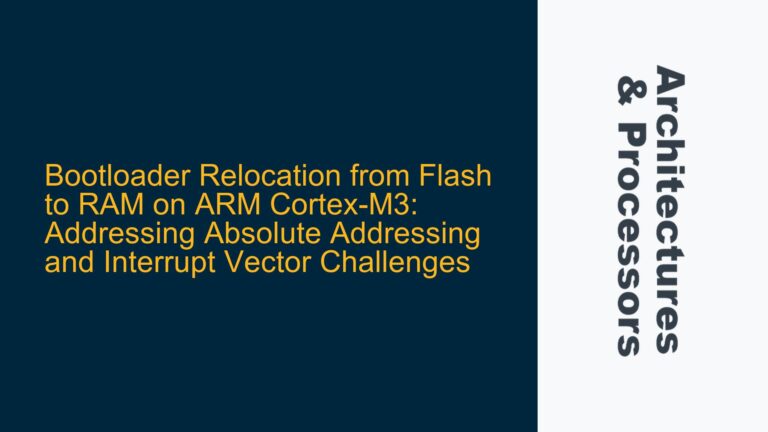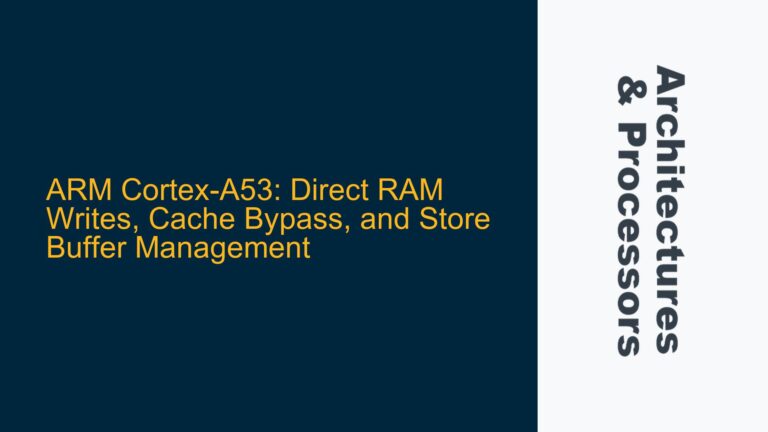ARM Cortex-R52 PMU Register Documentation and Reset Value Clarification
ARM Cortex-R52 PMU Register Ambiguities and Missing Reset Values The ARM Cortex-R52 processor, specifically revision r1p1, incorporates a Performance Monitoring Unit (PMU) that is critical for profiling and optimizing system performance. However, the documentation for the PMU registers, particularly in the context of PMU v3, is incomplete. Key issues include the use of "UNK" (unknown)…
